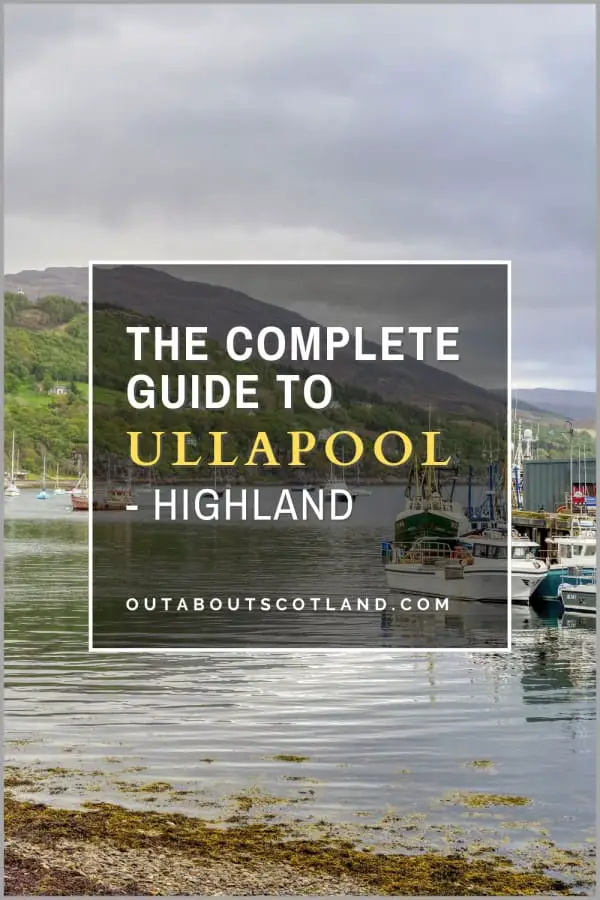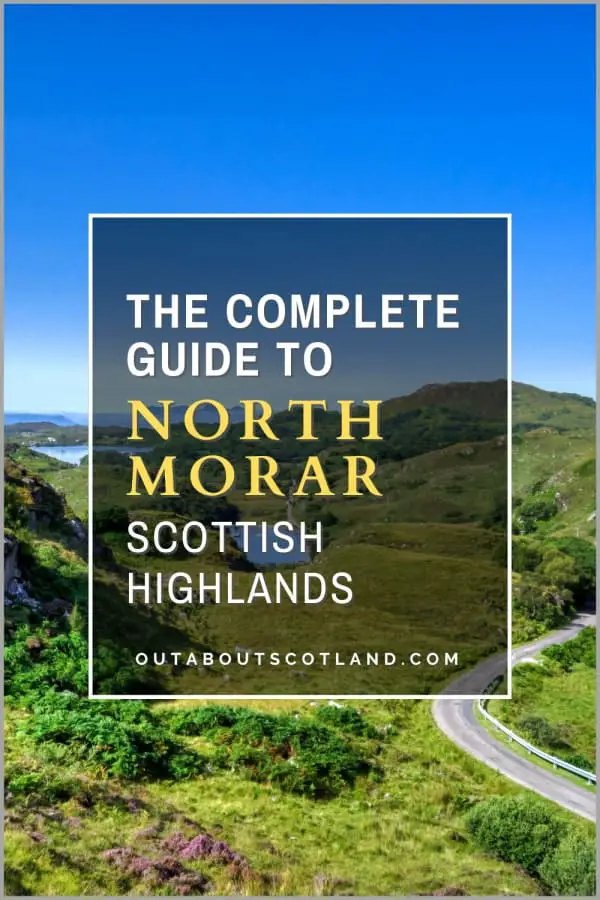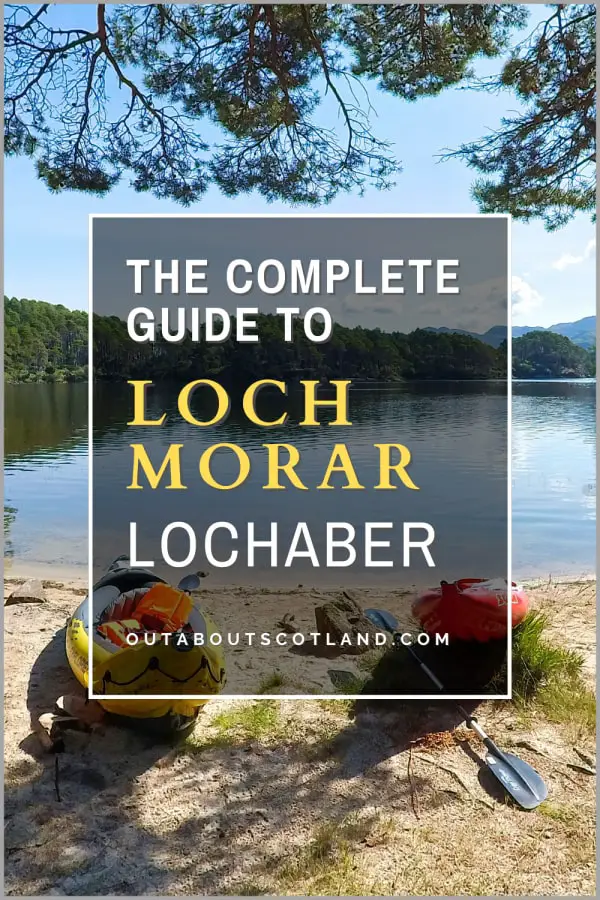Get ready to immerse yourself in the untamed beauty of one of the world’s most awe-inspiring landscapes, all without reaching for your wallet. Welcome to the enchanting Scottish Highlands, a scenic wonderland that’s famed for its rugged mountains, sweeping glens, and thousands of superb attractions that won’t cost you a single penny to visit.
Tourist attractions in the Scottish Highlands are as diverse as the scenery itself. History enthusiasts can step back in time on the shores of Loch Ness while gazing at Urquhart Castle, and perhaps even catch a glimpse of the Loch’s legendary monster while they’re there. The Culloden Battlefield is another must-visit for history buffs as it’s the site of the last major battle on British soil.
For nature lovers, the Cairngorms National Park – the largest national park in the UK – offers opportunities to spot wildlife, hike through stunning landscapes, and in the winter, ski down snowy slopes, while for those visitors who’d like to experience Scotland’s famed islands, the Isle of Skye is within easy reach of the mainland thanks to the Skye Bridge.
Whether you’re travelling alone, as a couple, or part of a group, the Highlands has something to cater to your interests. Just remember to pack a warm jacket, a good map, and a camera to capture all the stunning sights you’re bound to see.
Ben Nevis
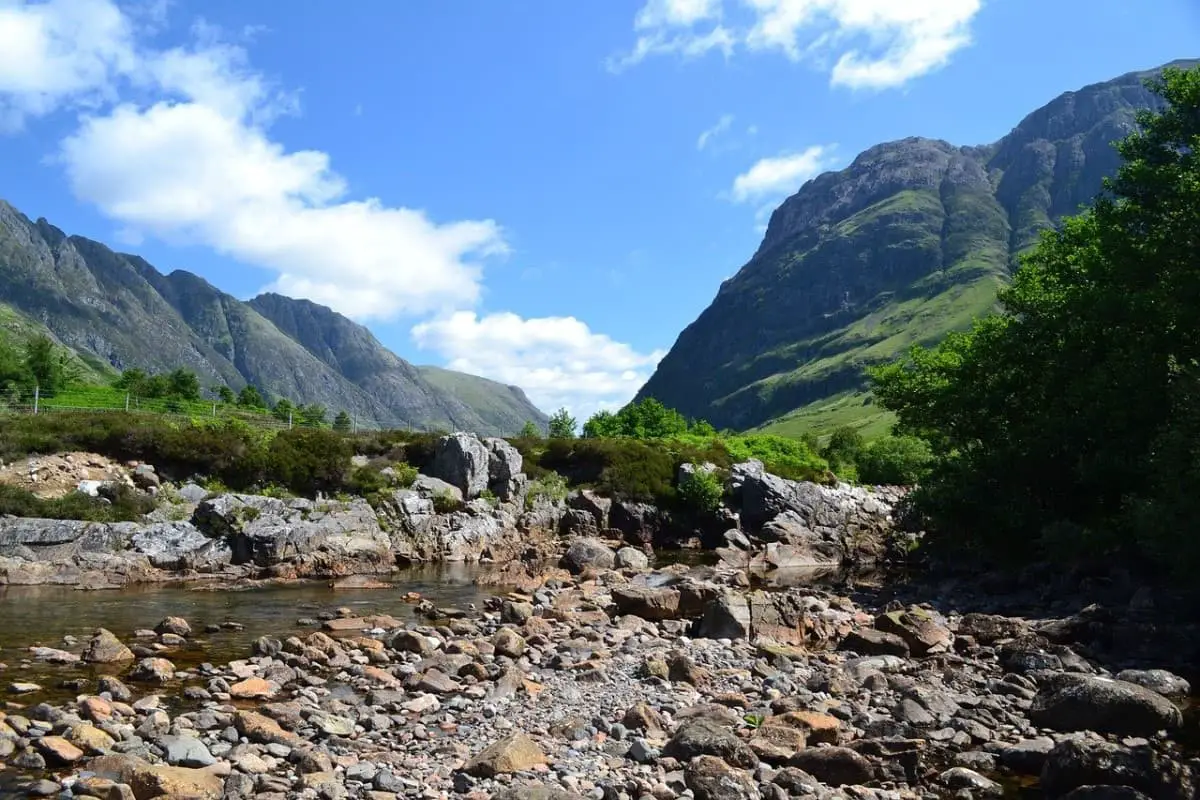
- Address: The Glen Nevis Visitor Center car park is located approx. 1.5 miles from the roundabout in Fort William located next to the River Nevis. Latitude: 56°48’38.90″N Longitude: 5°4’38.17″W. Postcode: PH33 6PF
- Opening Times: Open year-round.
- Tel Number: N/A
- Email Address: contact@ben-nevis.com
- Website: Ben Nevis
Ben Nevis is the highest mountain in the British Isles and is one of the most popular free-to-visit attractions in Scotland. Standing at 1,345 metres above sea level, it’s a popular destination for hiking and climbing enthusiasts as well as casual sightseers.
The mountain is located near the town of Fort William, part of the Grampian Mountain range, and is known for its dramatic landscapes as well as its challenging weather conditions which can change rapidly, making a climb to the summit something that needs to be planned beforehand. Wearing nothing but Crocs, shorts, and a T-shirt is a potential recipe for disaster, so take the time to research websites like the Lochaber Mountain Rescue Team before starting your climb.
The main route to the summit (commonly known as the ‘Tourist Trail’) is a well-maintained path that’s generally accessible between late spring and early autumn, while the second route (known as the Carn Mor Dearg Arête) is a challenging ridge climb which should only be attempted by experienced hill walkers.
In addition to hiking and climbing, Ben Nevis is home to a range of wildlife including red deer, golden eagles, and ptarmigans, and at the foot of the mountain you’ll find the Ben Nevis Distillery which is one of the oldest licensed distilleries in Scotland.
Protect Your Family From Scotland's Biting Midges
- Powerful, reliable protection for up to 8 hours
- Water- and sweat resistant
- Repels midges, mosquitoes, horse flies, sand flies, fleas and ticks
- Safe for use on adults, children over 30 months and pregnant women
- Non-sticky, moisturising with a pleasant fragrance
- Packaging may vary
Loch Ness
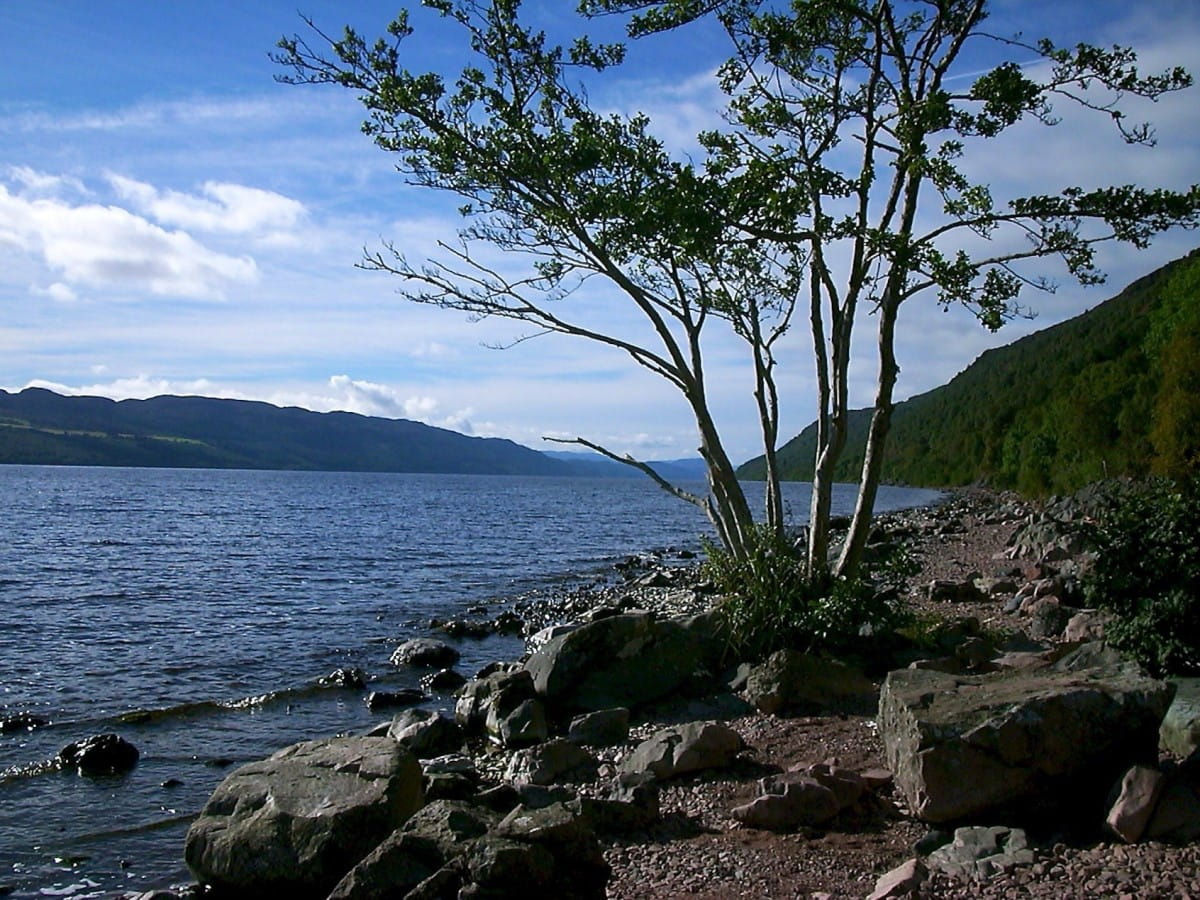
| Address: | Drumnadrochit, Loch Ness, Inverness-shire, IV63 6AN |
| Opening Hours: | Open 364 days a year (closed on Christmas Day) April - October 10.00 - Last entry: 17.00 November - March 10.00 - Last entry 15.00 |
| Admission Price: | Adult: £18.95 Child: £15.95 Family (2 adults and up to 2 children): £60 Discounted tickets available when booked online. |
| Parking: | Free car park on-site |
| Contact: | +44 (0) 1456 450573 |
| Facilities: | Toilets, gift shop, disabled access, cafe, baby changing |
Loch Ness is a deep freshwater loch in the Scottish Highlands extending for approximately 22.5 miles southwest of Inverness. Though it’s one of the top attractions in Scotland due to its scenic beauty, it’s best known for alleged sightings of the mythical Loch Ness Monster, affectionately known as ‘Nessie’.
The loch itself is the second largest Scottish loch by surface area after Loch Lomond, but due to its great depth, it’s the largest body of freshwater in Britain by volume, containing more freshwater than all the lakes in England and Wales combined. Its deepest point is 745 feet, making it the second deepest loch in Scotland after Loch Morar – another loch that’s supposedly home to a monster – though Loch Morar is (in my opinion) a more interesting place to visit due to its many islands.
Urquhart Castle, a medieval fortress located on the western bank, is a popular tourist attraction managed by Historic Environment Scotland that’s well worth a visit as the views from the castle are nothing short of stunning. The loch is also surrounded by picturesque villages such as Drumnadrochit and Fort Augustus where you can hop onboard a tour boat to look for Nessie while enjoying the lovely Highland scenery.
Culloden Battlefield
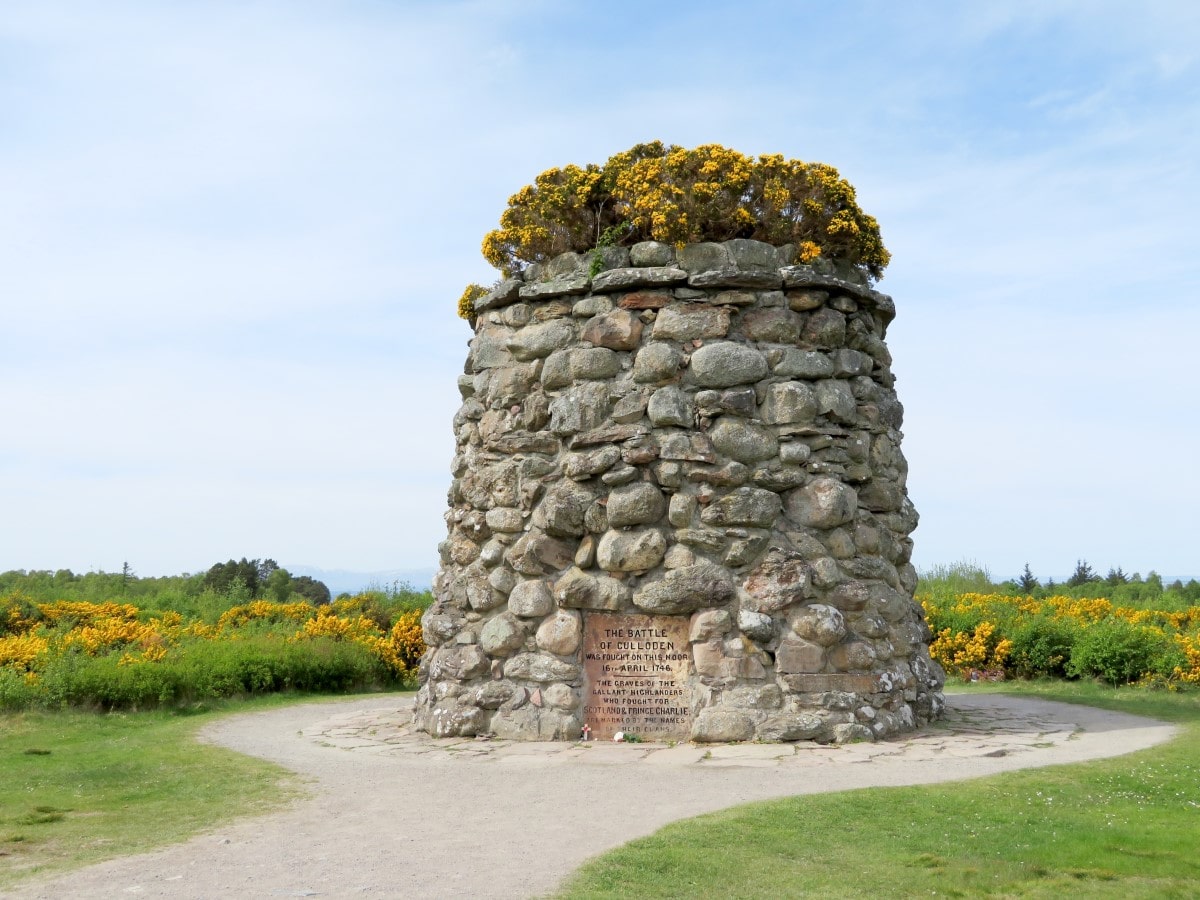
| Address: | Culloden, Inverness, IV2 5EU |
| Opening Hours: | Visitor Centre 09.00–16.00 Battlefield Open 24/7 |
| Admission Price: | Adult £14.00 Family £30.00 One adult family £25.00 Concession £11.00 |
| Parking: | Free on-site car park |
| Contact: | 01463 796090 culloden@nts.org.uk |
| Facilities: | Toilets, disabled access, gift shop, audio tour, guided tour, baby changing, picnic area |
| Photos: | Virtual Tour YouTube Video |
Visiting the Culloden Battlefield is like stepping back in time. This historic location was the site of the final Jacobite uprising – the 1746 Battle of Culloden – when the massed clansmen of Prince Charles Edward Stuart were almost entirely wiped out by British soldiers under the command of the Duke of Cumberland.
The visitor centre provides a comprehensive look into the events leading up to, during, and after the battle, allowing visitors to learn about the strategy of the two armies and the impact of the battle on Scotland in its aftermath. Though the exhibitions in the visitor centre have paid entry, anyone can make use of the facilities inside it (cafe, gift shop etc), and there’s no fee to enter the battlefield itself.
An immersive 360-degree battle experience in the visitor centre is particularly impactful, giving you a sense of what it might have been like on that fateful day, after which you can venture out onto the battlefield to walk along paths that feature markers to indicate locations where significant events happened.
Some of these include the lines where the Jacobite and Government troops stood and the graves of those who fell during the battle. Despite its tragic history, the site is a peaceful place with lovely views of the surrounding countryside.
Book Tours in Scotland
Glen Coe

| Address: | Glencoe, Ballachulish, PH49 4HX |
| Opening Hours: | 2 Jan–3 Apr, daily, 10.00–16.00 4 Apr–4 Nov, daily, 10.00–17.00 5 Nov–23 Dec, daily, 10.00–16.00 24–26 Dec, closed 27 Dec–30 Dec, daily, 10.00–16.00 31 Dec–1 Jan 2023, closed |
| Admission Price: | Free |
| Parking: | Paid car park on-site £4 |
| Contact: | 01855 811307 |
| Facilities: | Toilets, gift shop, disabled access, cafe, baby changing, hearing loop, walking trails |
Glen Coe is a breathtakingly beautiful glen located in the heart of the Scottish Highlands. Known for its dramatic landscapes, it’s a paradise for nature lovers, photographers, and outdoor enthusiasts alike. Formed by an ancient super-volcano and shaped by glaciers, the deep valley is surrounded by rugged, towering mountains that offer a multitude of experiences from walking to climbing.
The area is steeped in history (notably the Massacre of Glencoe in 1692) and it’s a popular destination for hiking, climbing, and snow sports in winter. There are numerous trails offering panoramic views of the glen, but the highlights have to be the trails that head up the mountains of Buchaille Etive Mor and Bidean Nam Bian which are nothing short of breathtaking from start to finish.
Close by is the village of Glencoe, a welcoming spot with cosy pubs and restaurants, and the Glencoe Visitor Centre where you can learn more about the area’s natural and cultural history. One thing to note is that Glencoe sees huge numbers of tourists who are beginning to damage the landscape, so please help to preserve this incredible place for future generations by remembering to respect the environment and leaving no trace of your visit behind.
Glenfinnan
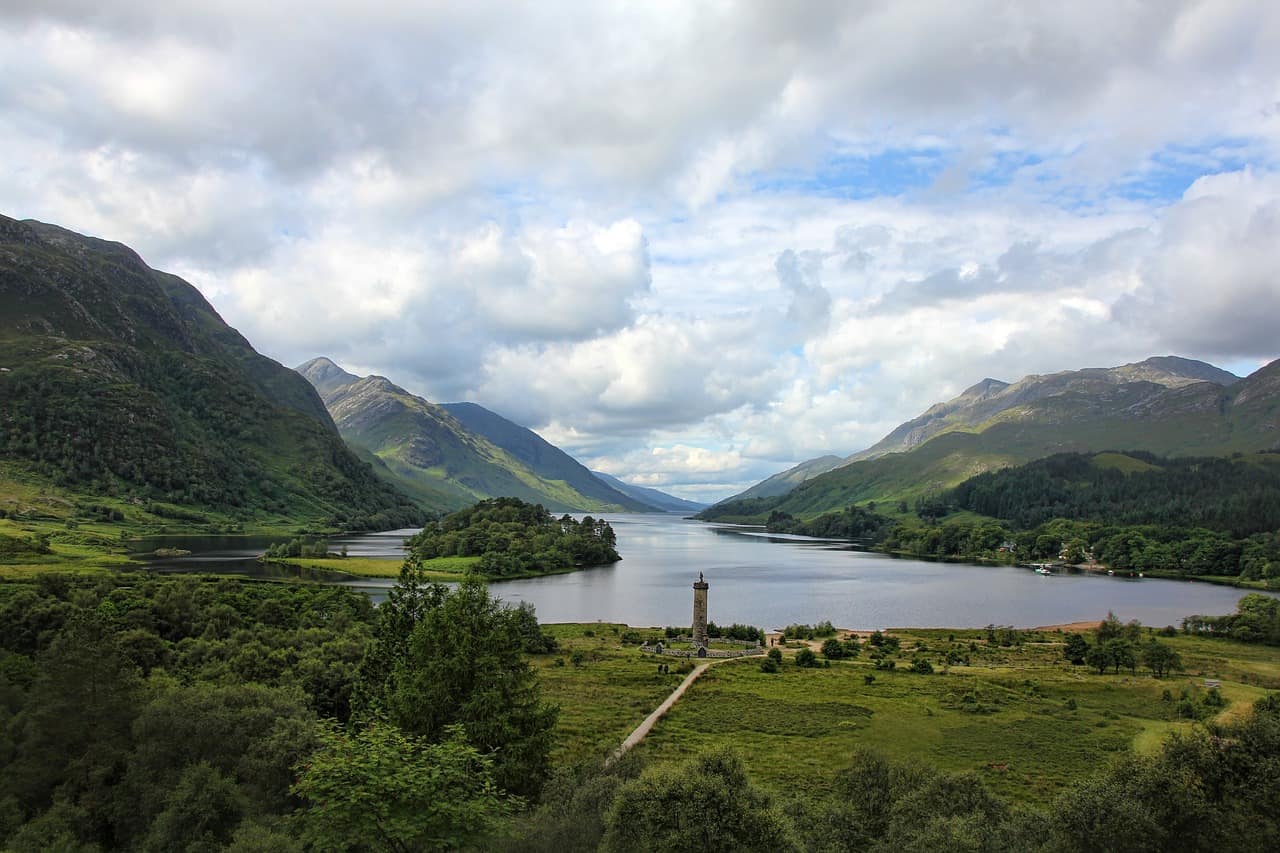
| Address: | Glenfinnan, PH37 4LT |
| Opening Hours: | 2 Jan–23 Dec, Sun–Fri, 14.00–15.00; Sat, 11.00–12.00 24 Dec–26 Dec, closed 27 Dec–30 Dec, daily, 14.00–15.00 31 Dec–1 Jan 2023, closed |
| Admission Price: | Monument: Adult £5 Concession £4 Child £3 Family £12 The visitor centre is free |
| Parking: | Paid on-site car park £3.50 cars, £6 motorhomes |
| Contact: | 01397 722250 glenfinnan@nts.org.uk |
| Facilities: | Toilets, disabled access, cafe, shop, audio tour, guided tour, picnic area |
Glenfinnan is a small but beautiful area located at the head of Loch Shiel which stretches southwest for 20 miles to the village of Acharacle. Named after Glenfinnan village, the area is best known for the Glenfinnan Monument, erected in 1815 to commemorate the Jacobite Risings, and the Glenfinnan Viaduct, a magnificent railway bridge featured in the Harry Potter films.
The Glenfinnan Monument, at the head of the loch, is a tribute to the Jacobite clansmen who fought and died in the cause of Prince Charles Edward Stuart and is a must-visit for all photographers. The National Trust for Scotland visitor centre situated nearby provides insight into the history of the monument and is notable for being one of the few places in Glenfinnan that has a car park. The address for it is: Glenfinnan, PH37 4LT.
For Harry Potter fans, the Glenfinnan Viaduct is a must-see as it was used in several of the films for the Hogwarts Express train scenes (in real life, The Jacobite steam train which operates between Fort William and Mallaig). For the best view of the train as it thunders over the viaduct, follow the track from the NTS car park which leads to an incredible scenic viewpoint.
Protect Your Family From Scotland's Biting Midges
- Powerful, reliable protection for up to 8 hours
- Water- and sweat resistant
- Repels midges, mosquitoes, horse flies, sand flies, fleas and ticks
- Safe for use on adults, children over 30 months and pregnant women
- Non-sticky, moisturising with a pleasant fragrance
- Packaging may vary
Loch Morar
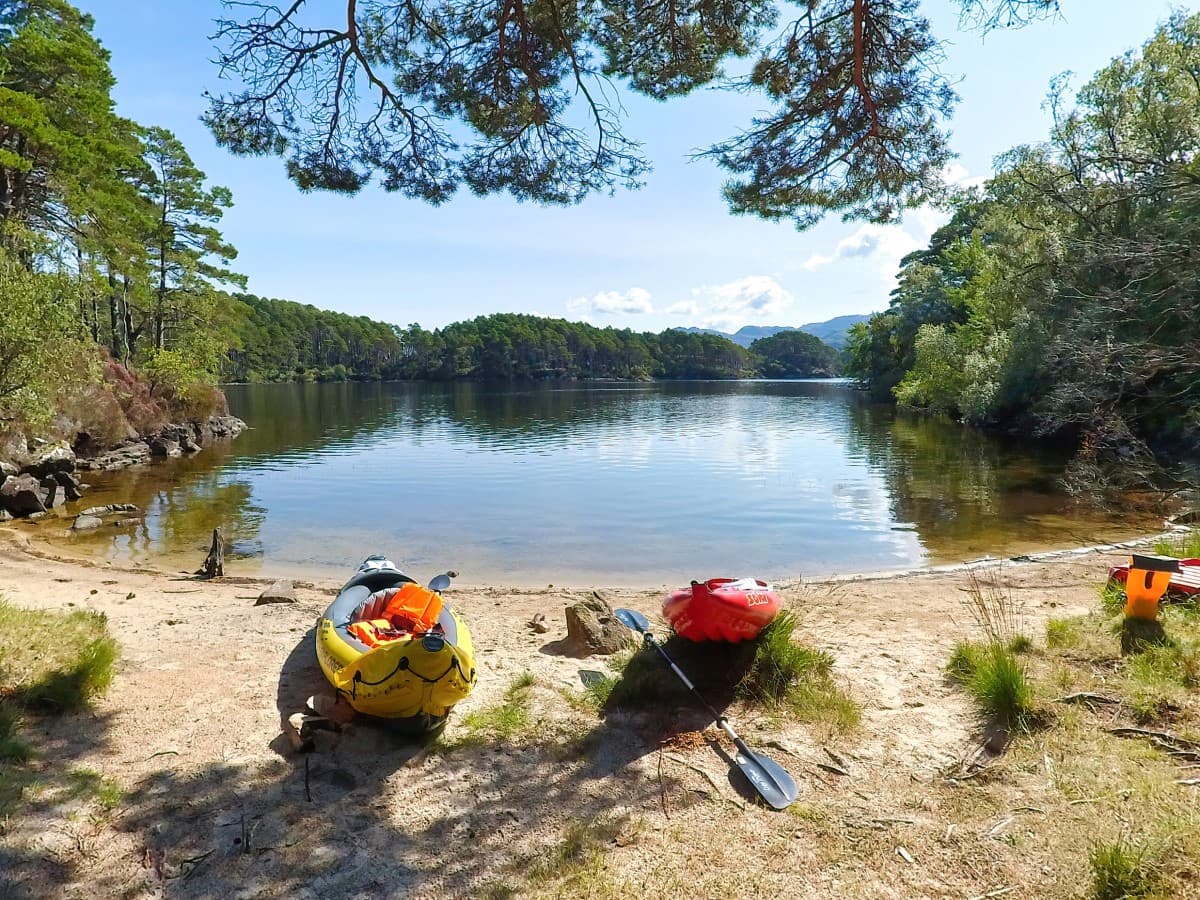
| Address: | Morar, PH40 4PB |
| Opening Hours: | 24/7 |
| Admission Price: | Free |
| Parking: | Free parking spaces on the side of the road. |
| Contact: | N/A |
| Facilities: | Facilities in Killin village (shop, cafe, restaurant with toilets). |
| Photos: | Virtual Tour YouTube Video |
Loch Morar is a freshwater loch in the Lochaber region of the Highlands. It’s the fifth-largest loch by surface area in Scotland, and the deepest freshwater body in the British Isles with a maximum depth of about 310 meters (1,017 feet).
The loch is surrounded by a stunning landscape of mountains including the Morar and Knoydart Hills which offer superb views on a number of walking trails, and it’s renowned for its crystal clear waters that provide food and shelter for animals such as otters, golden eagles, and red deer. It’s also home to a variety of fish including brown trout, salmon, and sea trout.
Loch Morar also has a mythical aspect. Much like the Loch Ness Monster, it is said to be home to Morag, a mysterious creature reported to inhabit the loch. I can’t say for certain that Morag actually exists, but I certainly had a strange feeling I was being watched as I kayaked around Loch Morar’s secluded islands.
Close to the western end of the loch lies Morar, a small village famous for its beautiful white sandy beaches, often referred to as the ‘Silver Sands of Morar‘. This close proximity means it’s possible to spend a morning swimming or kayaking in the loch and the afternoon relaxing on a beach, with nothing to pay except car parking fees.
Activities around the loch include fishing, wildlife watching, and hiking, while a short drive north will take you to the pretty fishing village of Mallaig which offers wildlife watch boat tours as well as ferry trips to the Small Isles of Rum and Eigg.
Bealach na Ba

The Bealach na Ba, translated from Gaelic as the ‘Pass of the Cattle’, is an iconic road located on the Applecross Peninsula (address: Strathcarron IV54 8ND). It’s one of the most famous drives in Scotland, renowned for its challenging conditions and featuring hairpin bends, steep inclines, and stunning vistas that make it a must-see for adventurous drivers and experienced road cyclists.
Beginning in the coastal village of Applecross, the road climbs over 2000 feet, reaching its highest point at the summit of the Bealach na Ba where visitors are treated to panoramic views of the surrounding mountains, sea lochs, and the Isle of Skye. The road then winds its way down into the picturesque village of Applecross.
Due to the challenging nature of the road, it’s recommended that only experienced drivers attempt it, with some caveats. First, large campervans should take the alternate route around the peninsula as it’s easy to get stuck on the tight bends of the Bealach na Ba. Second, it’s best avoided in the winter as it’s often closed due to harsh conditions. Still, those who do manage to brave it are rewarded with a truly unforgettable journey through some of Scotland’s most spectacular scenery.
Book Tours in Scotland
Loch Lomond
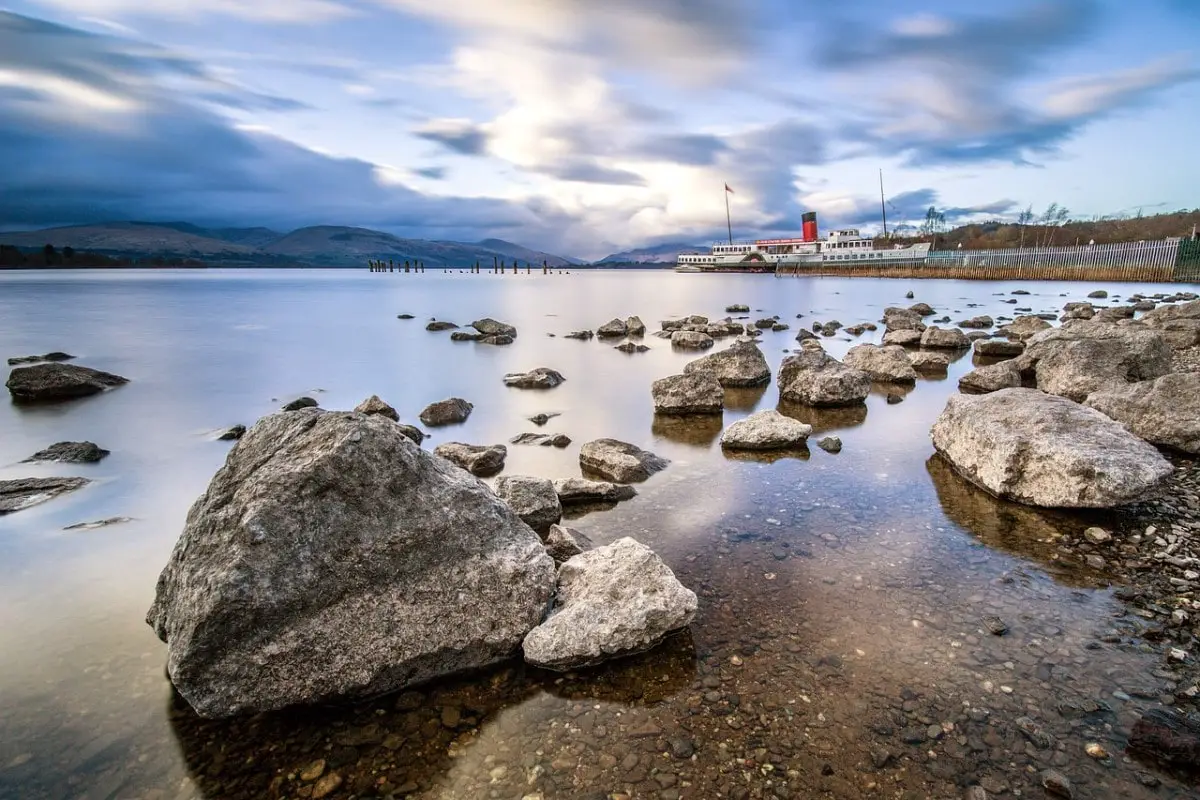
| Address: | Balloch: Alexandria G83 8QP Balmaha: Glasgow G63 0JQ Luss: Alexandria G83 8PA Tarbet: Tarbet G83 7DE |
| Opening Hours: | Loch Lomond is accessible 24/7 365 days a year. |
| Admission Price: | N/A |
| Parking: | There are public car parks at: Inveruglas: Arrochar G83 7DP Tarbet Pier: Arrochar G83 7DG Firkin Point: Arrochar G83 7DL Luss: Alexandria G83 8PA Balloch: Alexandria G83 8QP Balloch Country Park: Balloch G83 8LX Balmaha: Glasgow G63 0JQ Ben Lomond: Glasgow G63 0AR |
| Contact: | N/A |
| Facilities: | Loch Lomond Shores: Disabled access, car park, cafes, public toilets, wheelchair hire, picnic benches, BBQ area, information centre. Balloch Country Park: Car park, toilets, play park, picnic benches. Luss: Car park, cafes, restaurants, shops, public toilets, picnic benches, information centre. Balmaha: Car park, play park, toilets, information centre. |
| Photos: | Virtual Tour |
Loch Lomond is one of Scotland’s most stunning and well-known natural features, situated in the heart of the Trossachs National Park around 30 miles northwest of Glasgow city centre. Known for its beauty, the loch is the largest body of freshwater by surface area in Britain and boasts an abundance of wildlife along with unparalleled scenic views.
Due to the fact that Loch Lomond is located in the Trossachs, there are near limitless free activities to enjoy, and in addition to hiking and camping, visitors can engage in outdoor activities such as fishing, boating, orienteering, mountain climbing and wildlife spotting, to name just a few. The charming villages that surround the loch, such as Luss and Balmaha, offer a glimpse into Scottish culture, while for history enthusiasts there are several historical sites nearby including Balloch Castle and Dumbarton Castle.
Whether you’re a nature lover, an adventurer, or someone looking for a quiet retreat, Loch Lomond is a place that’s sure to leave a lasting impression.
Kilchurn Castle
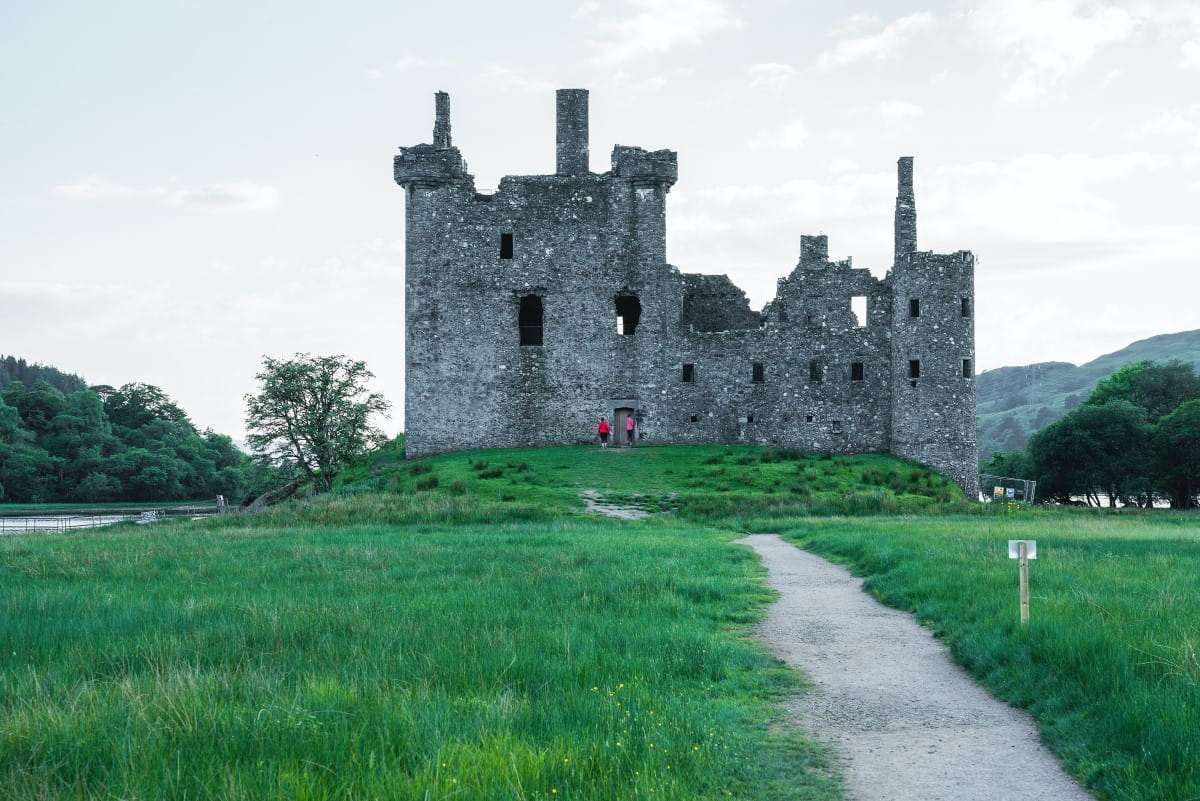
| Address: | Lochawe, Dalmally, PA33 1AF |
| Opening Hours: | 1 April to 30 September, Daily 9.30 am to 5.30 pm. October - March: Closed. |
| Admission Price: | Free |
| Parking: | Free car park at the entrance off the A85 |
| Contact: | N/A |
| Facilities: | Part-time snack van in the car park |
| Photos: | Virtual Tour YouTube Video |
Kilchurn Castle is a fascinating and historic fortress located on the northeastern end of Loch Awe in Argyll and Bute. It was first constructed in the 15th century by Clan Campbell and featured a robust five-story tower with a courtyard and an outer wall, but it now lies almost entirely in ruin. Over the centuries, it has weathered many storms and battles, and it has undergone several alterations, though the most significant changes were made in the 17th century when it was converted into a garrison stronghold.
One of the castle’s most notable features is its stunning panoramic view of Loch Awe and the surrounding mountains. Despite its ruined state, the castle holds a romantic charm and is one of the most-photographed castles in Scotland, if not the whole of Britain.
Visitors can reach Kilchurn Castle by a short walk from the nearby car park, or they can opt for a more adventurous approach by canoe or kayak from Loch Awe. Entry is currently free, but visitors should note that it is unmanned so occasionally they may find the entrance is closed and locked.
Near Kilchurn Castle you can also visit Cruachan Dam which supplies a unique hydroelectric power station built inside a mountain, and the Bonawe Historic Iron Furnace which is a well-preserved relic from the Industrial Revolution.
Protect Your Family From Scotland's Biting Midges
- Powerful, reliable protection for up to 8 hours
- Water- and sweat resistant
- Repels midges, mosquitoes, horse flies, sand flies, fleas and ticks
- Safe for use on adults, children over 30 months and pregnant women
- Non-sticky, moisturising with a pleasant fragrance
- Packaging may vary
Smoo Cave
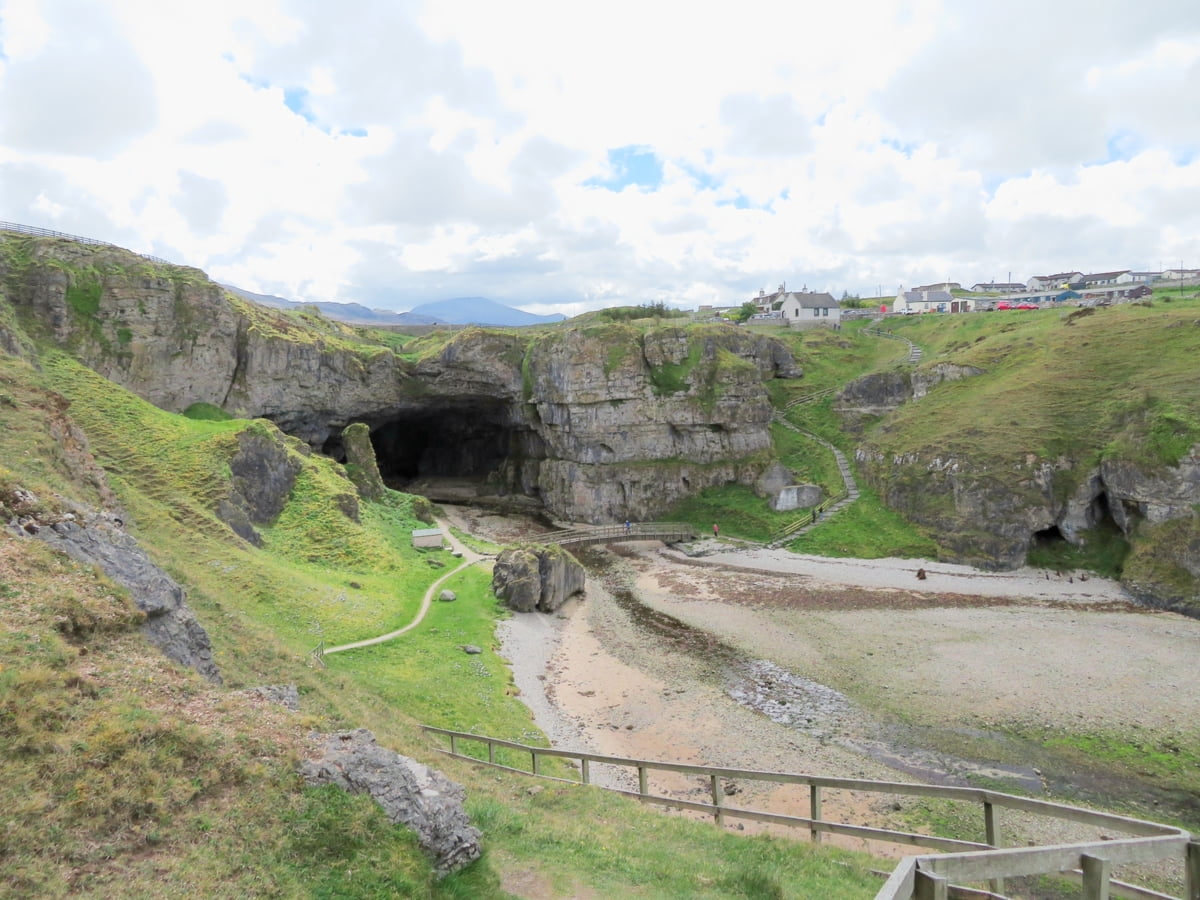
| Address: | Durness, Sutherland, IV27 4QB |
| Opening Hours: | The cave is accessible all year. Cave tours operate - June, July, August 10 am - 5 pm April, May, Sept, Oct 11 am - 4 pm Nov - March no tours |
| Admission Price: | Free to enter the main cave entrance. Cave tours cost £10 per adult and £5 per child. |
| Parking: | Free car park on-site |
| Contact: | 01971 511704 |
| Facilities: | Toilets in the car park |
| Photos: | Virtual Tour YouTube Video |
Smoo Cave is a striking and unique natural phenomenon located in the far north of the Scottish Highlands near the coastal village of Durness. It’s a large combined sea and freshwater cave with a dramatic, waterfall-fed sinkhole. The cave is over 200 feet long, 130 feet wide, and 50 feet high at the entrance, making it the UK’s largest coastal cave.
Smoo Cave is steeped in fascinating history and folklore. Archaeological findings suggest it was used for centuries by Norsemen, early settlers, and even possibly as a site for Viking gatherings, while local legends tell of smugglers and murderous highwaymen.
Inside, visitors can explore the atmospheric chambers with their fascinating rock formations and the thunderous waterfall in the innermost chamber. The main chamber is free to enter but a small fee is required to explore the innermost regions of the cave. Boat tours are available that take visitors through the cave system with a knowledgeable guide who’ll explain how the cave was built and some of the stories that it’s famous for. The surrounding area is also stunning, with a beautiful coastline to walk and a wealth of wildlife to see.
Whether you’re a nature lover, history buff, or adventure seeker, Smoo Cave offers a captivating and off-the-beaten-path experience in the Scottish Highlands. It’s a must-visit destination for anyone travelling in the area.
The Commando Memorial

- Address: Spean Bridge, PH34 4EG
- Opening Times: Open year-round.
- Tel Number: N/A
- Email Address: N/A
- Website: The Commando Monument
The Commando Memorial is a monument in the Highlands that’s dedicated to the men of the original British Commando Forces who trained in the area during World War II. It’s located near Spean Bridge where it overlooks the training areas of the Commando Training Depot which was established in 1942 at Achnacarry Castle.
The bronze sculpture, standing 17 feet tall, depicts three Commandos in characteristic military dress looking out over the landscape. It’s an incredibly moving tribute and a must-visit for history enthusiasts.
The local area around the Commando Memorial is absolutely stunning. You can take a walk around the memorial grounds which are always open before taking a short drive to the village of Spean Bridge which is a charming hamlet with a small selection of eateries and shops. For outdoor enthusiasts, you can explore the Great Glen Way (a long-distance path from Fort William to Inverness) as well as the Nevis Range Mountain Experience where you can go mountain biking, skiing, or take a gondola up Aonach Mor for stunning views.
In terms of historical attractions, the West Highland Museum in Fort William is a short drive away which is a fantastic place to learn about the history of the Highlands, or you can visit the ruins of Old Inverlochy Castle which is a ruined 13th-century castle on the banks of the River Lochy.
Book Tours in Scotland
St. Conan’s Kirk
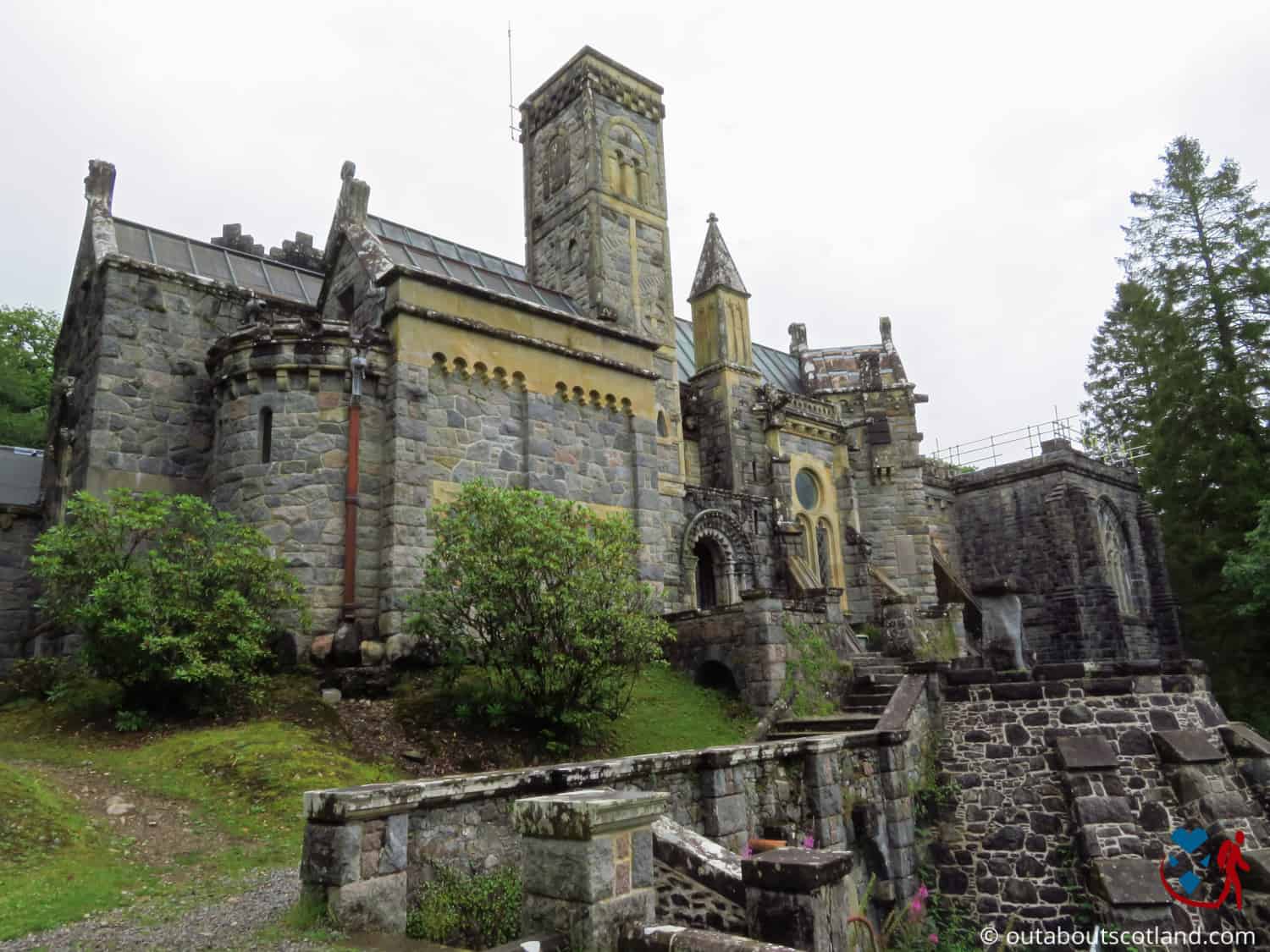
| Address: | Lochawe, Dalmally, PA33 1AQ |
| Opening Hours: | Summer (April to September) 8am – 6pm Winter (October to March) 9am – 5pm |
| Admission Price: | Free |
| Parking: | Free car park on-site Alternative car parking on roadside layby |
| Contact: | enquiries@stconanskirk.org.uk |
| Facilities: | Tearoom, guided tours |
| Photos: | Virtual Tour YouTube Video |
St Conan’s Kirk is a unique church located near Loch Awe in Argyll and Bute. The kirk is renowned for its eccentric architectural style which blends various designs from different periods, making it a fascinating destination for sightseers and history enthusiasts alike.
The church, built in the late 19th century, is nestled amidst beautiful gardens and offers stunning views of Loch Awe, Scotland’s longest freshwater loch. The surrounding area is an outdoor lover’s paradise, offering tranquil walks, lots of opportunities for bird watching, and countless perfect scenes for outdoor photography.
Inside, the church features intricate woodwork, stone carvings, and a variety of fascinating religious artefacts. Access is a wee bit difficult as there’s no dedicated car park, though there are a few spaces across the road and near the entrance to the Ben Cruachan Dam. There’s currently no entrance fee for St. Conan’s Kirk but donations are welcomed.
In addition to the kirk, the surrounding area of Loch Awe is full of free activities from kayaking and fishing on the loch to visiting the nearby Kilchurn Castle. Cycling and hiking are also popular activities, as is the walk to the viewpoint at the dam.
Glen Etive
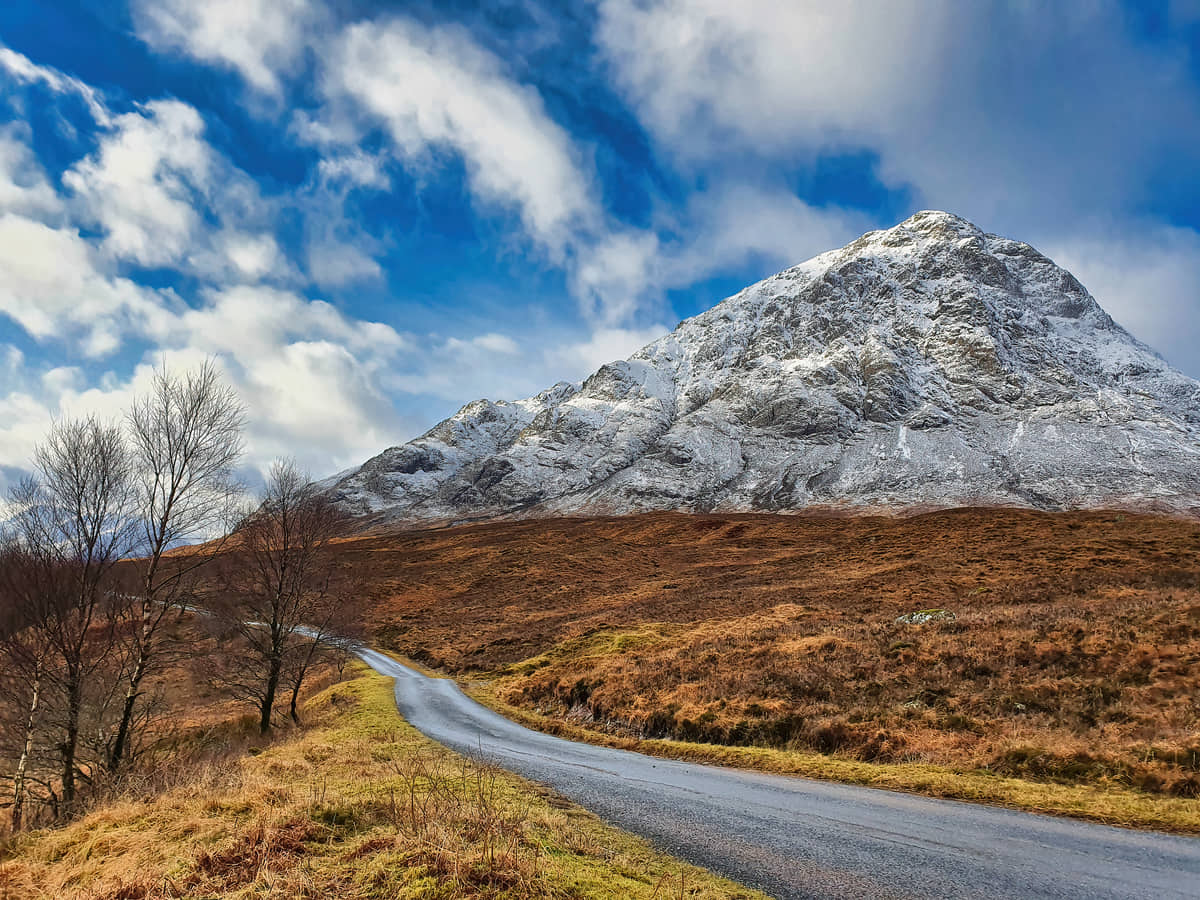
Glen Etive is a captivating landscape in the heart of the Scottish Highlands. This stunning area, renowned for its dramatic mountains, has been a favourite among nature lovers and adventurers for many years.
The glen and the surrounding area have been inhabited since prehistoric times and there are several ancient sites worth looking for in the glen including standing stones and burial cairns that bear witness to this early occupation. The area was once part of the ancestral lands of Clan MacIntyre, one of the largest Scottish clans, who had power bases in most of the glens around Loch Etive.
Glen Etive is a great location for wildlife enthusiasts. It’s home to a wide variety of animal species and you can usually spot red deer, golden eagles, and (very occasionally) pine martens in the area, while the rivers are teeming with salmon and trout, making it a popular destination for fishing.
The local area around Glen Etive offers a variety of attractions. The nearby village of Glencoe is a hub for outdoor activities and there are also several historical sites in the area, including the Glencoe Folk Museum and the haunting Glencoe Massacre Monument.
The glen is also a popular spot for stargazing due to its dark skies, and you might even catch a glimpse of the Northern Lights. Meanwhile, for movie fans, Glen Etive is a must-visit as it was used as a filming location for blockbusters including Skyfall and Braveheart.
Protect Your Family From Scotland's Biting Midges
- Powerful, reliable protection for up to 8 hours
- Water- and sweat resistant
- Repels midges, mosquitoes, horse flies, sand flies, fleas and ticks
- Safe for use on adults, children over 30 months and pregnant women
- Non-sticky, moisturising with a pleasant fragrance
- Packaging may vary





